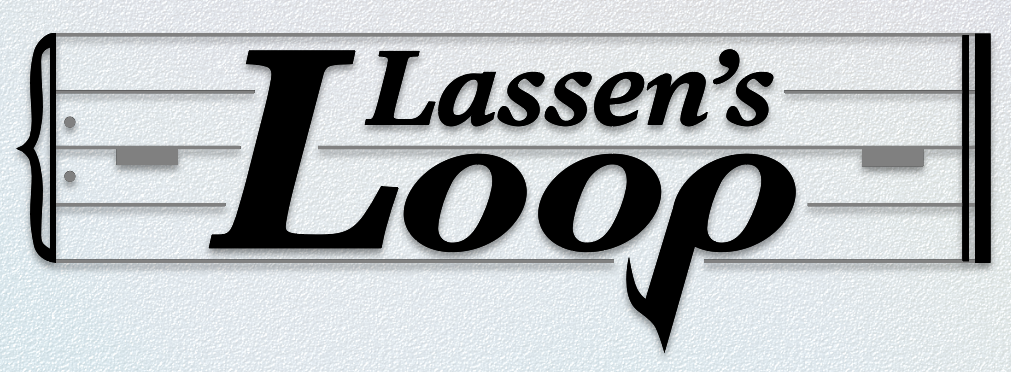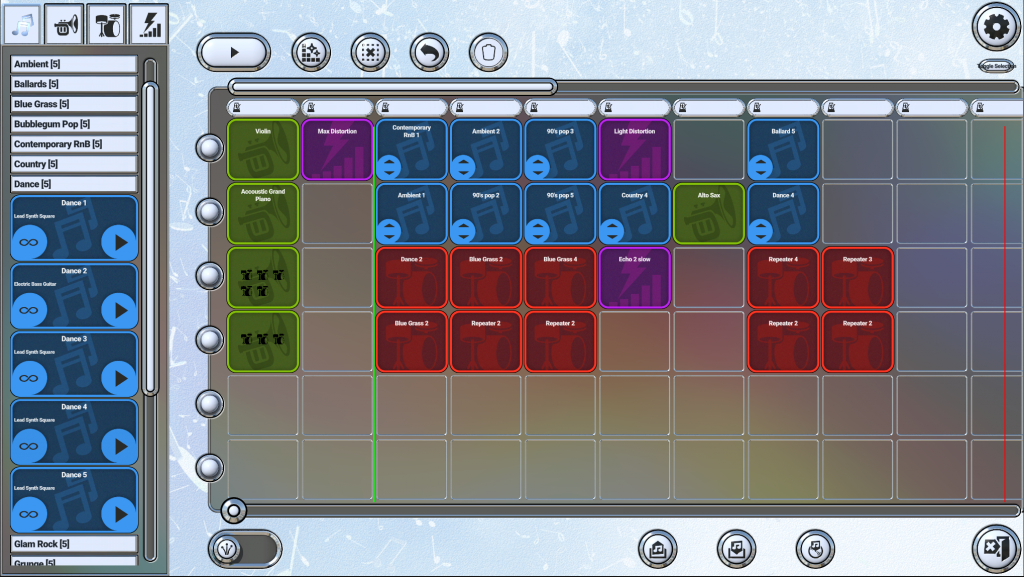We’ve not updated this in a while, but wanted to start talking about a new product we’ve been developing, called Lassen’s Loop. There is a story to go with the name that we’ll get into in other posts.
It’s a cross platform Unity based game/tool/toy that revolves around card packs and Musical Lego!
It’s something completely new, and we are still working out exactly how it all works, to be honest, but we wanted to start talking about it here.
We’ll be sharing some screen shots pretty soon – in fact, here’s the Logo, to give some idea of where we are going.

The premise revolves around ‘how can you compose music, without knowing how to compose music?” We wanted to bring music composition to those who have no idea what a time signature is, where middle C is or what an arpeggio is:) Make it as simple as possible. But also have a competitive side!
So how do you do that?
Well, we think we can do it, or have a good stab at it, at the very least.
So Lassen’s Loop revolves around 4 card types you can have in your deck, Riff Cards, Beat Cards, Instrument Cards and FX Cards.
Riff and Beat cards represent 8 seconds of midi music – Riff being one polyphonic instrument midi music, and Beat cards being up to 6 percussion (ie not polyphonic) instruments being played over 8 seconds.
Instrument cards are exactly what they sound like – each card may represent one polyphonic instrument or one percussion instrument.
FX cards are note playback modifier cards – put a flange effect on playback, or turn on distortion, or fade in over 4 seconds, or make an echo effect happen, for example.
In usage, there are 6 tracks on the game playfield, where cards can be dragged from the library and deployed on the tracks, and then played back.
Here’s a WIP version of the playfield, so you get the idea.

The player can drop instrument cards to replace the default ones for each of the Riff/Beat cards, which changes the instruments used for playback.
The player can also drop FX cards into the track, to affect playback from a certain point onwards. The player can also do things like affect the duration of a card, extending it from 8 seconds to up to 16 seconds, stretching out when notes are played. Or they can affect pitch playback of a card, moving notes played back up or down by up to 16 notes each way (obviously this isn’t possible for using beat cards, since those aren’t polyphonic notes, so there’s not pitch to affect.)
Once you grok what everything does, its a very very simple thing to play and create tracks.
Cards are, obviously, consumeable, and you buy card packs to supplement the default cards provided to everyone, in addition to some random cards given on initial creation of a game account.
The game is cross platform – Window (steam), OSX (steam), iOS iphone/Ipad and also Android phones and tablets.
There is both a single player ‘sand box’ mode, and also a two player challenge mode, which we’ll document in other posts.
But here’s the cool bit. Whatever you create using this game/tool/toy, you own. The app can generate an MP3 of playback, both on your local device and also on a hosted storage system owned by TNB Games (and in this case, we generate a link to the MP3 and dump that in your clipboard, so you can post it in any social media you chose), and you own that track. While we at TNBGames own the individual components of a given track, we grant the player ownership of that which they create.
In the same way that Lego doesn’t own sculptures created with their bricks, or paint producing companies don’t own a painting made with their products, we extend ownership of the arrangement of any given set of midi based cards to players.
So wanna create an album of tracks you made in Lassen’s Loop and sell it? Be our guest.
There’s a lot more to Lassen’s Loop than just this, but this is the basis of what we are building. We’ll be doing other posts to talk about more stuff inside the game, so stay tuned!